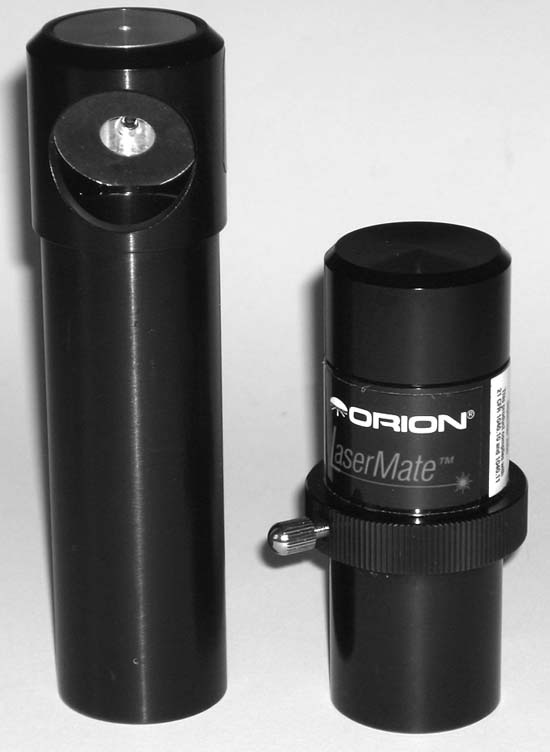Build a Film Can Collimating Tool
Align your scope on the cheap.
Collimation is the process of aligning a telescope so that all of the mirrors and lenses share a common optical axis. There are numerous collimation tools available commercially, including sight tubes, Cheshire eyepieces, laser collimators, autocollimators, and so on. Two of the most popular tools are a combination sight-tube/Cheshire and a laser collimator, such as the Orion models, shown in Figure 3-11.
None of these collimating tools allows you to collimate a scope perfectly. Their purpose is to get the collimation close enough that you can do final tweaks on a defocused star to achieve perfect collimation [Hack #40]. Star-collimation allows you to adjust alignment almost perfectly, but it’s nearly impossible to star-collimate a scope unless it is already reasonably well collimated.
How close you need to get to perfect collimation before you can star-collimate depends on the focal ratio [Hack #9] of the scope. An f/5 or faster scope must be very close to perfect before it’s possible to star-collimate it. An f/8 or slower scope need only be moderately well collimated.

Figure 3-11. A sight-tube/Cheshire (left) and a laser collimator
For fast scopes, we recommend using a combination sight-tube/Cheshire to do the preliminary collimation. But for slower scopes, there’s no need to spend the $35 or so that a sight-tube/Cheshire ...
Get Astronomy Hacks now with the O’Reilly learning platform.
O’Reilly members experience books, live events, courses curated by job role, and more from O’Reilly and nearly 200 top publishers.

